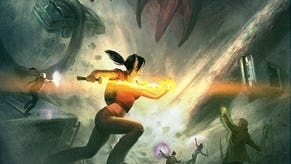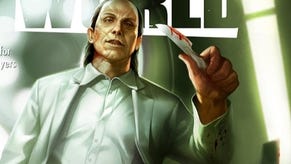The Secret World
Everything is true.
This is not to say that The Secret World will follow the route to solo MMO storytelling taken by Age of Conan's early levels, and Lord of the Rings Online's epic quests: instancing. "My preference is to have as much of it as open-world, shared spaces as possible. I don't like instances at all," says Tornquist, surprisingly perhaps for a craftsman of the adventure yarn. "So we're trying to avoid that. There will be some places which are reserved for you or a group of people, but for the most part we're going to make it seamless, open, a lot of people running around - and that does introduce a lot of challenges when it comes to the storytelling aspect. But we have ways of working around that."
On the story he'll be telling, Tornquist is at once fulsome and vague. He's able to be so because The Secret World's premise - the rise of an ancient evil, hundreds of millennia old, which has shaped the world's cultures and been kept secret - seems to be an all-encompassing grab-bag of history, mythology, urban legends, pop culture, fairytales and fiction.
The concept video buries us in teasing phrases faster than we can write them down: "Some secrets should stay buried... arctic explorers... now the conspiracy is revealed... we are in the fourth age... Stonehenge is a beacon... vampires... Titans... Earth is hollow.... Atlantis is rising... bees are harbingers... Noah's was not the only ark... Everything is true." No kidding.
How do you define the game's fiction when it seems to take such a kitchen-sink approach? Tornquist admits it's hard, but says his team is very much taking its lead from the locations. "The elements that we have in terms of day-to-day gameplay are more focused, and those are tied to locations in the game. So when you go to London there's a lot of London mythology there. What's the essence of London, or New York, or Egypt? What are the mythological aspects that you expect we're going to use here?" He adds that you'll get a sense of a much larger canvas that will be painted as the game expands over time.
On his influences, Tornquist can be clearer, and disarmingly frank. "Things like Sandman and Hellblazer and a lot of the Vertigo comic books, that kind of contemporary, dark urban fantasy. The works of Neil Gaiman, obviously that's a huge inspiration. The idea of magic existing and mythology being a truth in out universe and twisting that a little bit," he says.

"At the same time I'm also a huge fan of things like Buffy and Angel... Buffy was an inspiration when I made The Longest Journey as well, because I do like the fine balance between the humour and pathos, soap opera and sitcom, and creating this interesting fictional universe which is very sort of character-based... and which isn't hugely original. I'm not going to say that The Secret World is necessarily enormously original. But it's not the sort of setting that's often been explored in a game, definitely not an MMO."
That is certainly where The Secret World's appeal lies at the moment - and despite the slight GDC showing, that appeal is considerable. Sharp art direction and the expansive but simple premise - anything is possible, as long as it can be tied to the here and now - pick The Secret World out in a bright, but flattering spotlight similar to that which fell on Otherland last year. Urban myth and magic, fighting monsters and investigating mysteries on streets you know, being a sorcerer in smart casual: who doesn't want a piece of that?
If The Secret World's combat and classless society live up to their hype, they should also prove a powerful draw. But God, and the Devil, are in the details, and Tornquist's team has a mighty challenge ahead when it comes to balancing accessibility and a sense of achievement over years, not hours, of gameplay, with no structure to be their guide. Hopefully they can do more than talk their way out of answering that, because we'd love to see it solved.








